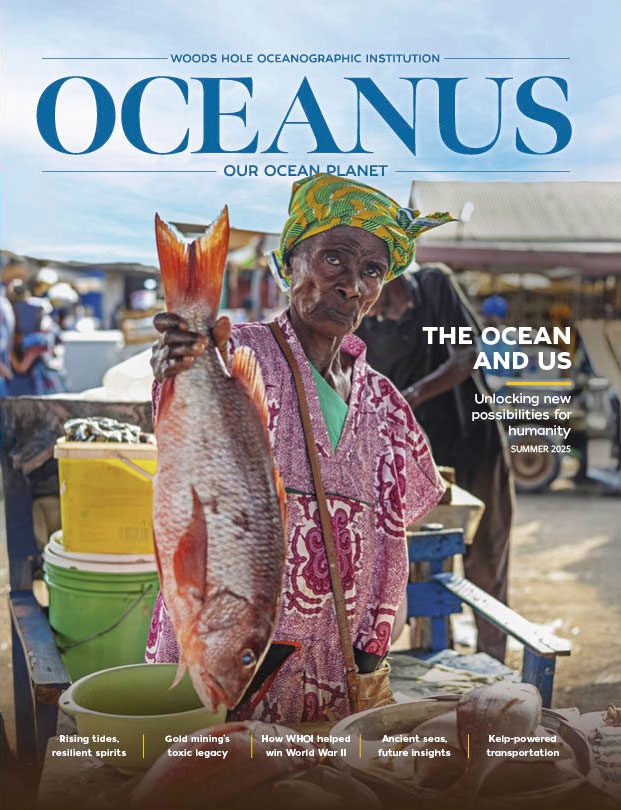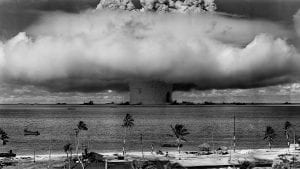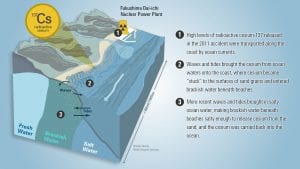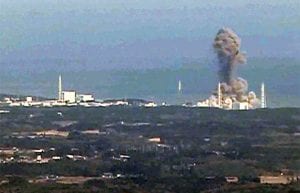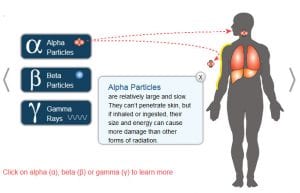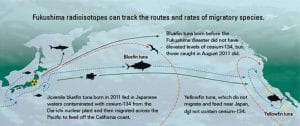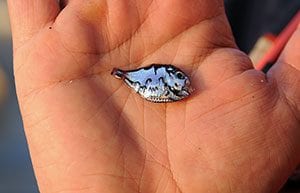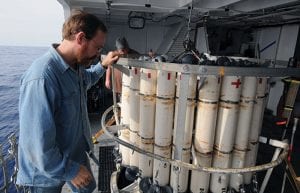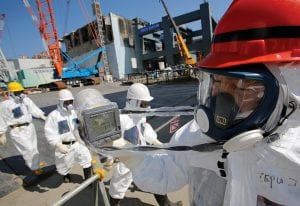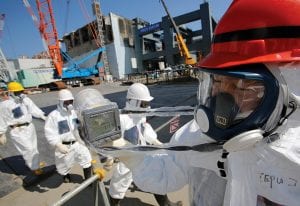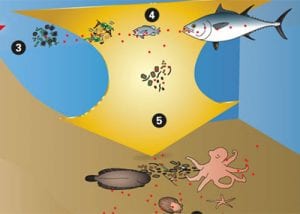Radiation
Fukushima and the Ocean: A decade of disaster response
One decade since explosions rocked Japan’s Fukushima Dai-ichi nuclear power plant, researchers look back at how the ocean was impacted by the radioactivity fallout from the event, and discuss how the situation continues to evolve.
Back to Bikini
WHOI scientists returned to the Pacific islands of Bikini and Enewetak in 2015 to study…
Radioactivity Under the Beach?
Scientists have found a previously unsuspected place where radioactive material from the Fukushima Dai-ichi nuclear…
Communication in the Fukushima Crisis
For most of Japan and the rest of the world, the first clear sign of…
Radiation Health Risks
The ability to gauge radiation at vanishingly low concentrations gives scientists a powerful tool for…
Seafood Safety and Policy
In Japan, a nation that eats prodigious amounts of seafood, one question sits high on the…
Tale of the Tuna
Understanding the movement of Fukushima-derived radioactivity through marine ecosystems may come down to getting a…
How Is Fukushima’s Fallout Affecting Marine Life?
» 日本語版 The Fukushima nuclear disaster delivered an unprecedented amount of radioactivity into the sea…
Radioisotopes in the Ocean
» 日本語版 The release of radioisotopes from the Fukushima Dai-ichi nuclear power plant in March…
ABCs of Radioactivity
<!– // –> » 日本語版 To the average layperson, “radioactivity” is a harsh and scary…
放射能の基礎知識
» English version 平均的な一般人にとって、「放射能」という言葉には強烈で恐ろしい響きがある。しかし実をいうと、放射性物質は、天然のものも人工のものも私たちの身のまわりにあふれている。そして、特に海洋学者にとっては研究のために重要な道具でもある。海洋学者クローディア・ベナテスネルソン教授は、2012年11月東京で開かれた「海洋放射能汚染に関する国際シンポジウム」の初日発表で、放射能の基礎について概説した。 MIT/WHOI共同プログラムで1999年に博士号を取得し、現在サウスカロライナ大学で海洋科学プログラムのディレクターを務める彼女は、発表の冒頭においてこう説明した。「放射能とは、元素の原子核変化から生じる放射線の自然放射です。私たち放射化学者は、数多くの放射性元素を日頃から利用しています。それらはエネルギー的に不安定な元素であり、不安定さを解消する際に、放射線という形で周囲の環境に余分なエネルギーを放出しています」。 「放射線」には大まかに2つのタイプがある。1)「非電離放射線」は、可視光とマイクロ波を含む。また荷電イオンを生じて原子構造を変化させるほどのエネルギーを持たないため、人の健康に大きな脅威をもたらさない。一方で、2)「電離放射線」は、生体組織の原子構造を変化させる、すなわち細胞を殺し、がんを発生させるおそれがある。そのため、医療用X線や太陽の紫外線には直接さらされないように対策が講じられる。 すべての放射性同位体または放射性核種は、中性子、陽子、電子、または光子などの電離粒子を発して、過剰なエネルギーを失う。その過程で、これらいわゆる親核種は崩壊して、異なる数の陽子と中性子を含んだ娘核種になる。親核種と陽子数が等しい娘核種は、親核種の同位体である。親核種と陽子数が異なる娘核種は親核種と異なる元素であり、化学的性質も異なる。 各変化には固有の半減期がある。放射性同位体の半減期とは、所与の試料に含まれる原子の半分が崩壊するのにかかる時間である。この娘核種は、安定した非放射性元素となる場合もあり、また放射性崩壊系列の別の放射性核種へと崩壊していく場合もある。 たとえば、自然発生するもっとも一般的な放射性核種の1つであるウラン238は、陽子が92個、中性子が146個あり、トリウム234 (陽子90個、中性子144個) に崩壊したのち、プロトアクチニウム234 (陽子91個、中性子143個) に崩壊し、ウラン234 (陽子92個、中性子142個)に崩壊し、トリウム230(陽子90個、中性子140個)に崩壊していく。これら各放射性核種の半減期は、それぞれ44.68億年、24日、1.2分である。そして、これら各元素の反応は化学的に異なる。 「半減期は放射性核種ごとに異なるため、数日から数千年まで様々な時間スケールで起こる多くの海洋過程が進行する時間(速さ)を計る時計として利用できます」と彼女は言う。いわゆる「放射性トレーサー」は、海水の混合速度、地下水が陸から海に流入する速度、そして例えば炭素等の元素が大気中、海中、海底、大陸を循環する速度を解明するうえで役立つ。なお、放射性トレーサーには、海域に何十億年も存在するものもあれば、空間から入射する宇宙線と大気中の気体の相互作用で形成されるものもあり、さらに人間の活動により地球環境にもたらされるものもある。…
日本の三重災害
» English version 現在「日本の三重災害」として知られている地震、津波、原発事故の苦難の連鎖は、海底の大規模な破壊とともに始まった。 2011年3月11日午後2時46分、東北沖の海底、日本海溝の底でぶつかり合うユーラシアプレートと太平洋プレートにすべりが生じた。ここは世界で最も地震が多発する地帯であり、このようなすべりの発生は珍しいことではない。海底で上の地層が下の地層に対してずり上がる巨大衝上断層は長さ約800kmにもわたり、比較的小さな揺れなら毎年数百回も起こっている。 ただ、そのすべりは通常とは違っていた。のちに東北地方太平洋沖地震と呼ばれることになるこのマグニチュード9.0の揺れは、近代的な記録が残されるようになった1900年頃から起きた世界で5番目に大きな地震である。震源地から320 km も離れていない東京で6分間も揺れが続いた。ようやく揺れが収まったとき、本州は東へ8m移動していた。 地震による陸上の被害は甚大であった。それに加えて大津波が押し寄せたのだった。とてつもない海底からの突き上げにより一連の巨大な津波が生じ、その第一波は地震から30分以内に沿岸を襲った。 津波になすすべもなく 東京から約226km北で1971年から運転されていた東京電力福島第一原子力発電所では、この地震によってすでに停電していたものの、非常用バックアップシステムが適切に機能していた。そこを津波が襲った。発電所の防犯カメラによる映像が、まさにその一瞬をとらえている。原子炉の正面で、高さ約6mの防波堤に守られた浅い港湾内を漂う小船。その防波堤のすぐ後ろから巨大な波がうねり迫ってくる。 高さ約14mにも達した津波は、すべての安全措置を乗り越えた。原子力発電所施設は急速に浸水し、バックアップ用のディーゼル発電機は機能を停止した。この全電源喪失が壊滅的な悪循環を引き起こし、チェルノブイリ原発事故以来最悪の被害をもたらすことになる。 冷却システムを失った同原発で、6基の原子炉のうち3基が過熱し始めた。数日のうちにこれら3基では溶融した核燃料により生じた水素ガスが充満して大爆発が起こり、4号機の建屋にも被害が及んだ。この爆発による放射性降下物の予測変化に基づいて日本政府は避難指示区域を広げ、15万人以上が自宅から避難した。一方、完全なメルトダウンを阻止するための必死の努力のなかで、高圧放水砲、消防車、ヘリコプターから何千トンもの水が原子炉に注がれ、その汚染水の大半が、最終的に海へ流出した。 廃墟と化した一帯 津波の第一波到来から予断を許さない状況が続いた約10日後、差し迫った原子力危機は収束した。しかし、この三重災害がいまも及ぼし続ける影響は実質的に予測がつかない。津波だけで死者が約2万人。避難者は15万人を超える。経済的損失は、24兆〜47兆円と推定される。海岸に沿って散乱した約2,250万トンの瓦礫を撤去する作業だけで数年はかかる。…
Japan’s Triple Disaster
» 日本語版 The chain of calamity now known as Japan’s Triple Disaster began with a…
Lessons from the 2011 Japan Quake
When the ground in Japan started shaking on March 11, 2011, the Japanese, who are…
